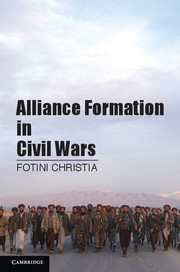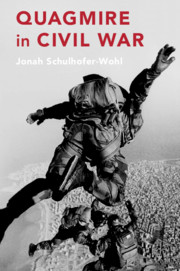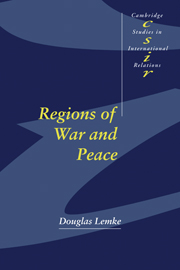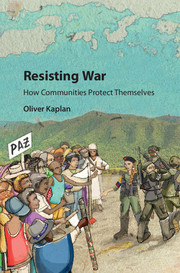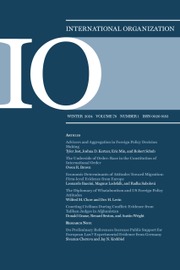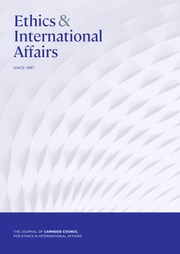Alliance Formation in Civil Wars
Some of the most brutal and long-lasting civil wars of our time – those in Afghanistan, Bosnia, Lebanon, and Iraq, among others – involve the rapid formation and disintegration of alliances among warring groups, as well as fractionalization within them. It would be natural to suppose that warring groups form alliances based on shared identity considerations – such as Christian groups allying with Christian groups, or Muslim groups with their fellow co-religionists – but this is not what we see. Two groups that identify themselves as bitter foes one day, on the basis of some identity narrative, might be allies the next day and vice versa. Nor is any group, however homogeneous, safe from internal fractionalization. Rather, looking closely at the civil wars in Afghanistan and Bosnia and testing against the broader universe of fifty-three cases of multiparty civil wars, Fotini Christia finds that the relative power distribution between and within various warring groups is the primary driving force behind alliance formation, alliance changes, group splits, and internal group takeovers.
- The manuscript's approach to civil war alliances spans political science subfields and involves a range of methodologies
- Theoretically, it engages the neorealist literature within international relations, as well as the identity, ethnicity and coalition literatures within comparative politics and political economy
- Empirically, it closely engages with four comprehensive comparative case studies of multiparty civil wars (the Afghan civil wars of 1978–1989 and 1992–1998 and the Bosnian civil wars of 1941–1945 and 1992–1995) that involve both qualitative and quantitative analysis of primary data collected in the field
Awards
Winner of the 2013 Gregory M. Luebbert Award, American Political Science Association
Reviews & endorsements
"Although many scholars have studied the origins of interstate alliances, no one has answered the question of how warring groups choose their allies in civil wars – until now. Using insights from realist international relations theory, Fotini Christia convincingly shows that balance-of-power considerations drive the alliance decisions of armed groups, which simultaneously try to maximize their chances of victory and their share of the spoils. When these two goals conflict, groups switch sides with little conscience or consistency: today’s valued friends are often yesterday’s deadly foes. Drawing on extensive field work in Afghanistan and Bosnia, as well as statistical analysis of all multiparty civil wars, Christia’s fine book is a model of multimethod research that will make a lasting contribution to the literatures on alliance formation and civil wars."
Alexander Downes, George Washington University
"Christia provides a rigorous and compelling explanation for the puzzle of alliance formation and group fragmentation in multiparty civil wars. She demonstrates that they are driven by balancing rather than ideological or identity considerations, and shows that ‘identity narratives’ are ex-post instrumentalizations. A striking demonstration of how to blend theories of international relations with in-depth field research in hard places, this book is an important contribution to our understanding of the dynamics of civil wars."
Stathis N. Kalyvas, Yale University
"Just when it seemed that the balance of power had become an old-fashioned concept in international politics, it turns out that it is alive and well as the crucial factor shaping alliance strategies in today's civil wars. Although warring groups from the Balkans to Afghanistan may justify their alliances in terms of shared cultural identities, Fotini Christia shows that choices of friends and foes are in fact decisively shaped by tactical calculations based on power politics. Her diverse research skills, ranging from field interviews with ruthless warlords to statistical analyses of civil war datasets, make this a lively and rigorous contribution to the study of war."
Jack Snyder, Columbia University
"The overarching argument put forth by Christia is that rebel groups, driven by elite desire to survive and achieve postwar political control, will choose to align with other warring actors that will improve their chances of victory … the detailed accounts presented in the case studies are a welcome and valuable contribution to this new literature. Summing up: recommended."
M. Olson Lounsbery, East Caroline University, Choice
"Although some may argue that Christia’s neo-realist framework is not comprehensive because it undervalues the ideological and psychological dimensions of civil wars, the author’s argument is both persuasive and fundamental to understanding alliance formation and disintegration. The author’s observation in the book’s conclusion that the alliance shifts in Iraq’s Anbar province in favour of the Iraqi government (and then against it) have been driven by relative power considerations seems to be borne out by events since the book’s publication. Anyone interested in or responsible for policies aimed at resolving multi-party civil wars stands to gain from close consideration of Christia’s argument."
H. R. McMaster, Survival
Product details
November 2012Paperback
9781107683488
360 pages
233 × 155 × 19 mm
0.51kg
19 b/w illus. 11 maps 15 tables
Available
Table of Contents
- Part I. Context and Theory:
- 1. Literature and research design
- 2. A theory of warring group alliances and fractionalization in multi-party civil wars
- Part II. Afghanistan:
- 3. The Afghan Intra-Mujahedin War, 1992–8
- 4. The Afghan Communist-Mujahedin War, 1978–89
- 5. The theory at the commander level in Afghanistan, 1978–98
- Part III. Bosnia and Herzegovina:
- 6. The Bosnian Civil War, 1992–5
- 7. The Bosnian Civil War, 1941–5
- Part IV. Further Extensions:
- 8. Quantitative testing on the universe of cases of multi-party civil wars.

